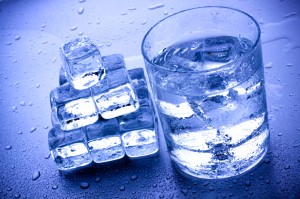Hemodialysis and fluid intake: How much to drink?
 People on in-center hemodialysis usually have dialysis treatments three times a week. The amount of fluid they can have is limited since the kidneys lose the ability to remove excess fluid from the body. Too much fluid can increase blood pressure, make the heart to work harder, and may cause shortness of breath.
People on in-center hemodialysis usually have dialysis treatments three times a week. The amount of fluid they can have is limited since the kidneys lose the ability to remove excess fluid from the body. Too much fluid can increase blood pressure, make the heart to work harder, and may cause shortness of breath.
To determine how much fluid to consume each day several things are considered, starting with urine output. Many hemodialysis patients no longer urinate due to complete kidney failure. In this case, liquids are usually limited to 32 ounces or 1000 ml each day. This amount will result in a daily fluid weight gain of 1 kilogram, or 2.2 pounds. Some hemodialysis patients still urinate due to residual renal function. For them, the fluid intake is usually more liberal. All obvious liquids like coffee, tea, juice and water plus items that are liquid at room temperature like ice, sorbet and gelatin count as part of a person’s fluid allowance.
How much liquid can dialysis patients consume each day if they still make urine? To find out, a 24-hour urine collection is measured. The measured volume is added to 1000 ml (1 liter or approximately 32 ounces) fluid allowance. For example, if the 24-hour urine collection is 500 ml, the fluid restriction is 1500 ml per day instead of 1000 ml. This is approximately 48 ounces or 6 cups of liquid each day. Residual renal function can decrease over time and fluid goals may change as a result. For people on home hemodialysis the treatments are usually more frequent—5 to 6 days a week. Fluid is removed more often so the daily allowance is greater. Dialysis patients are advised to weigh themselves daily to help keep track of weight and fluid balance.
Additional Kidney Diet Resources
Visit DaVita.com and explore these diet and nutrition resources:
DaVita Kidney-Friendly Recipes
This article is for informational purposes only and is not a substitute for medical advice or treatment. Consult your physician and dietitian regarding your specific diagnosis, treatment, diet and health questions.

Recent Comments